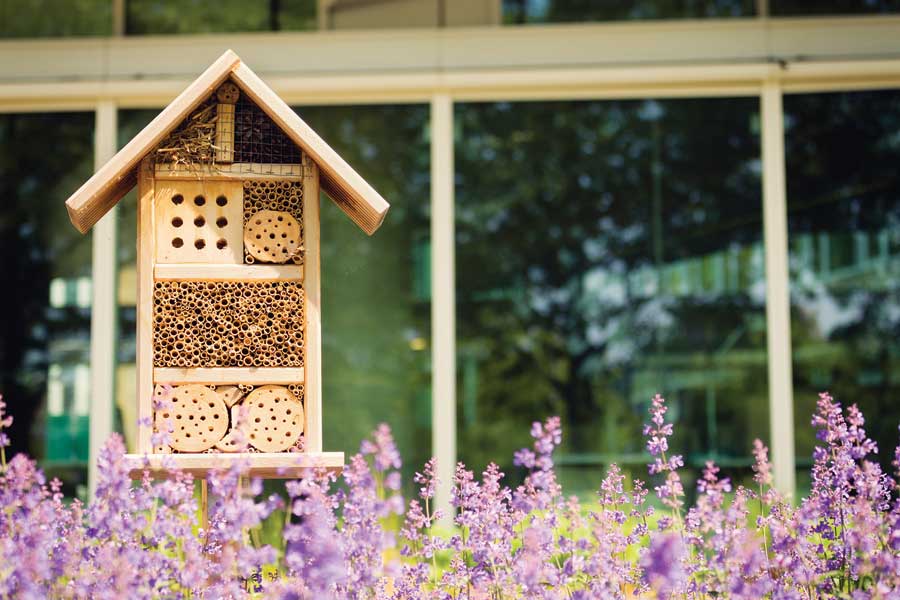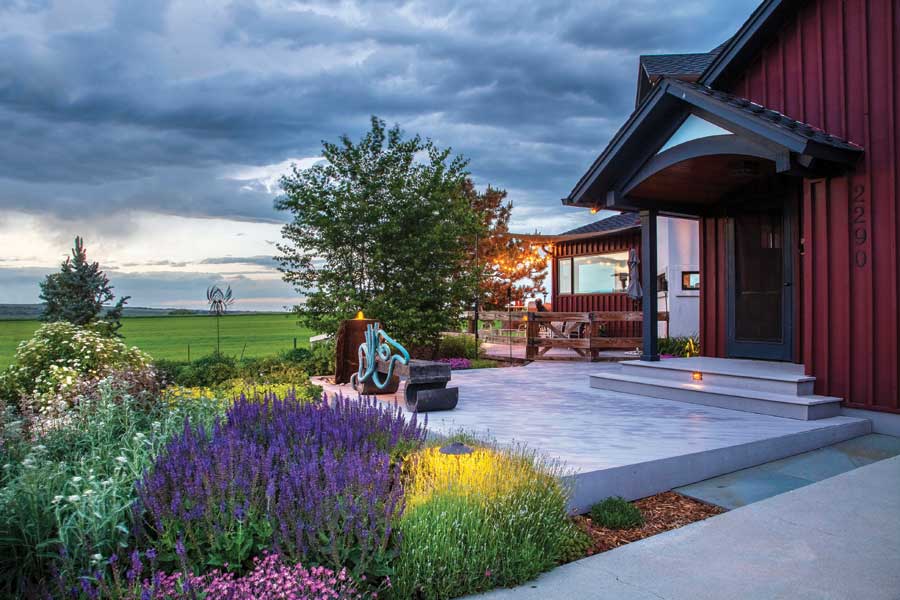How to build a homemade bee hotel that helps native pollinators thrive
29 Mar 2019
B&Bs for Bees
By Sara Bruskin Picture a bee. Go on—get the image in your head. Did you imagine a black-and-yellow honeybee? There’s a good chance you did, and there’s also a good chance you’ve seen hundreds of other native bees without knowing it. Unlike nonnative honeybees, the state’s native bees vary in color, shape and size. Some are metallic green like the sweat bee, or vibrant blue like the orchard bee. Some are the size of a gnat; others can be more than an inch in length. That’s partly why some local pollinator advocates, the BeeChicas, decided to build a native bee hotel in front of Boulder Public Library’s main branch last spring. BeeChicas’ Theresa Beck says, “We wanted to educate people about native bees, which are mostly solitary and nest in wood or in the ground.” About 560 native bee species flit around in Boulder County alone, and close to 1,000 species call Colorado home.
In addition to your hotel, here are other ways to help native pollinators:
✿ Never use pesticides or herbicides on your yard. ✿ Make sure all plants you buy are neonicotinoid-free. Major agricultural corporations like Bayer and Monsanto promote this pesticide, which is lethal to bees, and it’s often not disclosed on the plant labels. If you’re not sure, ask the nursery. ✿ Don’t mulch every area in your yard. Some native bees overwinter underground, and mulch covers up potential nesting sites. ✿ Don’t disturb the ground where you don’t have to. ✿ After the growing season is over, leave pithy stems from plants like sunflowers and raspberry brambles in place. Bees can bore into them to make nests. ✿ Let dandelions and clover grow in your yard as nectar sources for bees. ✿ Eating locally grown organic food supports local farms, which grow a variety of forage for bees. ✿ If you’re a beekeeper, maintain strong, healthy colonies. Sick honeybees can spread diseases and parasites to local pollinators. ✿ To learn more, check out BeeChicas’ workshops on the events calendar at Boulder Public Library, contact them online at www.beechicas.com, or follow them on Instagram @beechicas.
Bee Hotel Basics
Want to help native bees? Build them a hotel. It’s safe, fun and easy, and it’s a decorative garden element. A bee hotel is essentially a wooden box with an open front. The hotel is filled with pieces of drilled wood that provide small tunnels for bees to lay their eggs in. Hollow bamboo rods also work well, and can fill in spaces between larger chunks of wood.Here are tips to create a safe, inviting nesting area for native bees:
- Use untreated wood only. No stains or varnishes, as their smell can deter bees and be unhealthy for them.
- Drill the wood cavities ⅛ to ⅝ of an inch wide and 8 inches deep (make sure the holes don’t go all the way through the wood). Varied hole widths attract different bee species.
- Cut the back end of bamboo rods just past a node so the rod is naturally sealed, or seal the back end with nontoxic hot glue.
- Make sure all drilled holes and bamboo rods have smooth interiors. Splinters and rough wood can damage bees’ wings.
- Drill holes at least ¾ of an inch away from the outer edge of your wood box. Otherwise, parasitic wasps can use ovipositors to drill through the side, hoping to lay their own eggs in a bee’s nest.
- Cover the open front with chicken wire so birds cannot eat the larvae. Shelter your bee hotel from rain and wind. Add a sloping roof with an overhang or keep the bee hotel beneath a covered area.
- Don’t be alarmed if aphid wasps take up residence in the bee hotel; they don’t hurt bees. Having the wasps around also helps your garden, as they eat aphids.
—S.B.












